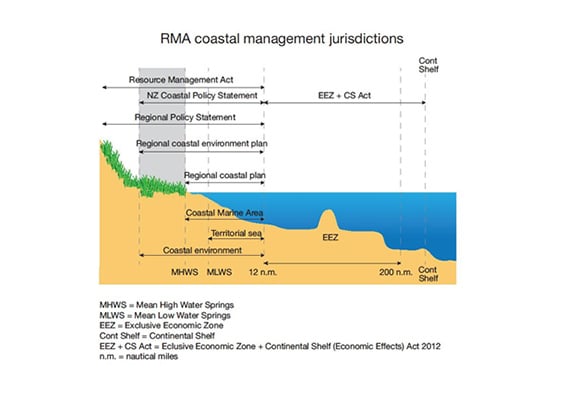These principles are a tool to guide the NZCA, its contribution to, and/or response to issues relating to coastal management. They recognise that the coast forms part of the continuum from the mountains to the open sea.
These principles are consistent with and complementary to the Authority’s existing marine and access principles. The principles were approved by the NZ Conservation Authority at its meeting on 3 April 2017.
Governance
- Protection of our coastal environment1, its coastline, its biodiversity, its highly dynamic nature and its landforms unique to New Zeland is a national, international and intergenerational responsibility and the coastal environment should be governed for the benefit of all New Zealanders. Marine coastal protected areas are one essential element of marine coastal environment management and should be implemented through an integrated approach.
- The principles of the Treaty of Waitangi will be upheld and the resulting obligations will be delivered.
- The coastal environment is viewed as a taonga – there for everybody and upon which we rely.
- Decision making will be informed by traditional knowledge of tangata whenua along with the public, new sources of information and robust science.
- Decisions should be based on a comprehensive understanding of marine coastal processes, including its dynamic nature, the ecology and mātauranga Māori.
- Any allocation of rights to use coastal resources will be based on robust science and appropriate evidence.
- The coastal environment area should be regularly monitored. New information and research results will be reviewed and the findings used for continuous improvement of the management of the coastal zone.
- Where there is insufficient information the precautionary principle will apply.

Conservation and protection
- Marine coastal protected areas are one essential element of marine coastal environment management and should be delivered through an integrated management approach. This approach should provide the framework to implement those measures necessary to conserve the most critical ecosystems, including indigenous biodiversity, survival and reproduction, intrinsic values, natural landforms, historic and natural character, and wahi tāpu.
- Ideally this will be achieved through a network approach to coastal protected areas that are comprehensive, representative and effectively managed throughout the coastal zone.
- Well designed and properly managed marine coastal protected areas are integral to an ecosystem approach providing safe havens for marine coastal biodiversity.
- Intergenerational equity requires that non-extractive values for the marine coastal environment – intrinsic values, wilderness values, spiritual values, ecosystem services – are protected.2
- A spectrum of protection mechanisms will be used to enable communities to be involved in the protection, conservation, restoration and use of the marine coastal environment. This includes upholding the principles of the Treaty of Waitangi and delivering against its obligations. Concepts of rāhui, taiāpure and kawenata should be integral to the development of the marine coastal environment to recognise customary non-commercial rights.
- New Zealand should seek to protect representative, rare and special marine ecosystems perpetuity within the marine coastal area.
Sustainability
- The New Zealand Coastal Policy Statement provides guidance for the consistency and integration of the management of the coastal marine environment throughout New Zealand.
- The marine coastal environment will be sustainably managed in a way that maintains its potential for future generations, and balancing the rights and interests of customary, individual and corporate users.
- The marine coastal environments will be managed in an integrated way that recognises the complex inter-relationships of land, sea and air and the dynamic nature of this environment.
- Rights to use the marine coastal environment should be exercised in an ecologically sustainable manner ensuring the maintenance of biological diversity to meet the needs of present and future generations.
- Where finite resources are being used e.g. extractive mining, this is to be carried out in a manner that mitigates the adverse impacts of the activity on the marine environment and in accordance with the polluter/user pays principle.
- Regional coastal plans are a tool to manage the coastal marine area, and actual or potential effects of use, development or protection.
- Marine coastal management should acknowledge the changes brought about by natural processes in a dynamic environment e.g. coastal erosion, uplift from earthquakes, subsidence, storm impacts etc.
- Marine coastal management should address the adverse effects of human activities originating from outside the coastal zone.
- All steps should be taken to safeguard the coastal marine environment from invasive alien species.
Footnote: These principles should be read in conjunction with other current NZCA principles (i.e. marine and access), the template for Section 4 of the Conservation Act (giving effect to the Principles of the Treaty), and differing land tenure categorisations and related management that may apply e.g. National Parks Act, Reserves Act and Marine Reserves Act.
[1] As defined by the RMA coastal management jurisdictions diagram published above.
[2] Ecosystem services are the benefits people obtain from ecosystems. These include provisioning services such as food and water; regulating services such as flood and disease control; cultural services such as spiritual, recreational, and cultural benefits; and supporting services, such as nutrient cycling, that maintain the conditions for life on Earth.